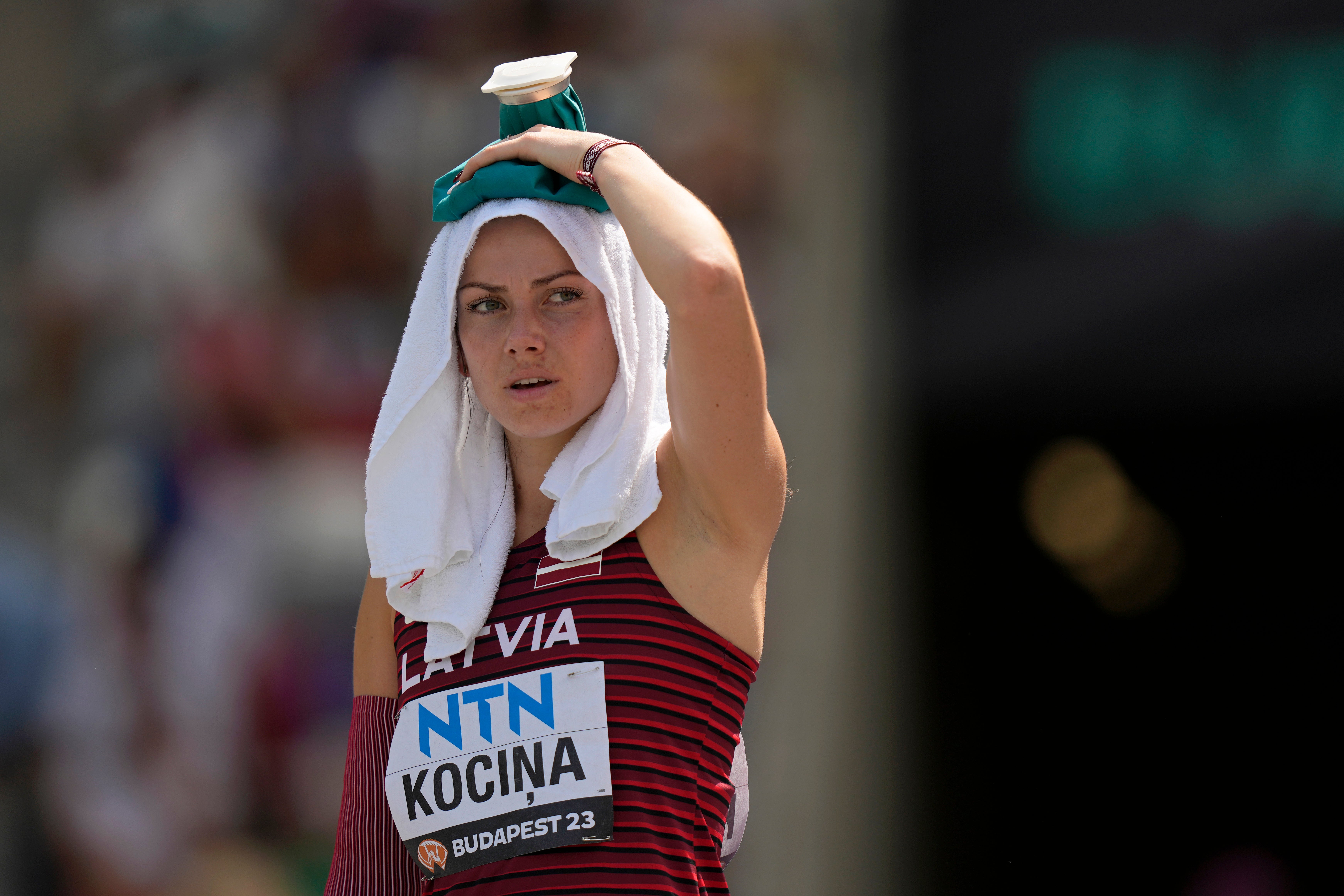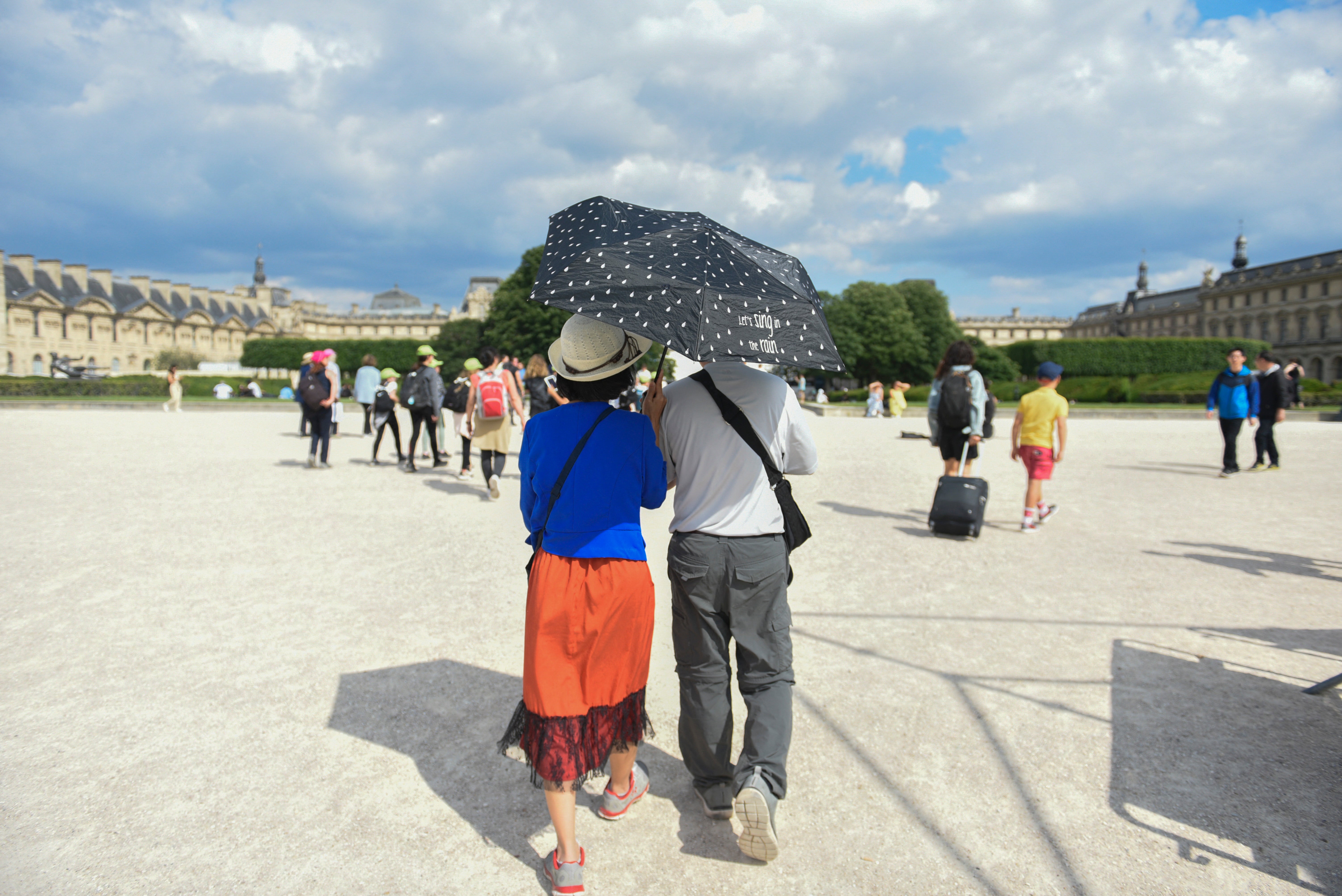How athletes are preparing to beat the heat at Paris 2024
With temperatures set to soar in the French capital, finding ways to keep cool could be key to Olympic success

Your support helps us to tell the story
From reproductive rights to climate change to Big Tech, The Independent is on the ground when the story is developing. Whether it's investigating the financials of Elon Musk's pro-Trump PAC or producing our latest documentary, 'The A Word', which shines a light on the American women fighting for reproductive rights, we know how important it is to parse out the facts from the messaging.
At such a critical moment in US history, we need reporters on the ground. Your donation allows us to keep sending journalists to speak to both sides of the story.
The Independent is trusted by Americans across the entire political spectrum. And unlike many other quality news outlets, we choose not to lock Americans out of our reporting and analysis with paywalls. We believe quality journalism should be available to everyone, paid for by those who can afford it.
Your support makes all the difference.While most of his rivals prepared for the 50 kilometre race walk at the 2019 Doha World Championships by warming up in full track suits in the 32 degrees Celsius heat, Evan Dunfee did the polar opposite.
The 33-year-old Canadian spent the minutes before the race immersed in an ice bath trying to lower his core temperature before racing in the Persian Gulf.
The strategy paid off.
Fourteen walkers succumbed to the conditions and did not finish and Dunfee passed one wilting rival after another to win bronze.
Five years since the event in Doha and three years after the Tokyo Olympics were the hottest on record, the potential for similarly searing temperatures is a concern at the Paris Games.
In a warming world, heat acclimatisation has moved rapidly from the fringes of sports science into the mainstream.

Heat adaptation is now an integral part of athletes’ training programmes and failure to buy into the various strategies on offer can make the difference between a medal and the dreaded did not finish (DNF).
“A lot of the guys were beaten before the race in Doha even started,” Dunfee, whose heat work with Canadian sports physiologist Trent Stellingwerff is renowned in the race walking world, told Reuters.
“Around six of us hopped in ice baths, and not surprisingly, all six did really well.”
At the Tokyo Olympics, one in 100 athletes experienced heat-related illness, according to a British Medical Journal study.
Spanish tennis player Paula Badosa needed a wheelchair after succumbing to the heat in her quarter-final and men’s second seed Daniil Medvedev took several medical timeouts during a match.
When an umpire asked if he was fit to continue, the Russian fired back: “I can finish the match but I can die. If I die, are you going to be responsible?”
The Paris Games open on July 26, roughly the same time that Parisians sweated through an extreme heat wave last year, when temperatures above 40 degrees resulted in more than 5,000 deaths in France.

Most athletes will have done heat training before arriving in Paris, with working out in a heat chamber one of the more advanced methods.
Even on the coldest days in North England, the temperature inside Manchester Metropolitan University’s environmental chamber can be set at a scorching 40C and 70% humidity.
“We’re capable of replicating any environmental conditions in the world,” said Dale Read, a sports performance lecturer at the university.
Key physiological adaptations become measurable after a few days of vigorous training in the chamber, Read added.
Lower core body temperature, heart rate and skin temperature are some of the main benefits. Blood volume, cardiac output and the ability to sweat all improve.
There is also a perceptual shift as athletes feel better equipped mentally to deal with the heat.

“The benefit athletes get from this type of preparation is profoundly important,” said Ollie Jay, professor of heat and health at the University of Sydney.
Core temperature is key because performance wanes as it rises. Data from professional cyclists, said Jay, shows they can reach 41.5C with no heat-related illness.
“They’re highly conditioned professional athletes and they can tolerate these higher core temperatures. When you’re heat acclimated, you need a higher internal temperature to cause cellular damage,” Jay added.
Not all heat acclimatisation strategies have to be high tech.
Training in a hot climate and during the hottest time of the day can have the same effect as a climate chamber, while a hot bath or sauna after sessions can also benefit.
Some athletes train in greenhouses. Others wear extra layers.

American mountain biker Christopher Blevins says heat training has become imperative as global temperatures rise.
“I don’t think it was something athletes were thinking about as much five, 10 years ago,” he added. “Today I had six layers on and my coach had a hair dryer blowing into my face the whole time.”
Dunfee now views hot weather as a competitive advantage. Race walkers keep cool by wearing ice-filled scarves or hats. Women stuff bags of ice down their sports bras.
“When you consider how much of your life you spend training, to not do these last tiny little microscopic percentages could make a big difference in the grand scheme of things,” he said.
“I find that pretty wild.”
Reuters
Join our commenting forum
Join thought-provoking conversations, follow other Independent readers and see their replies
Comments